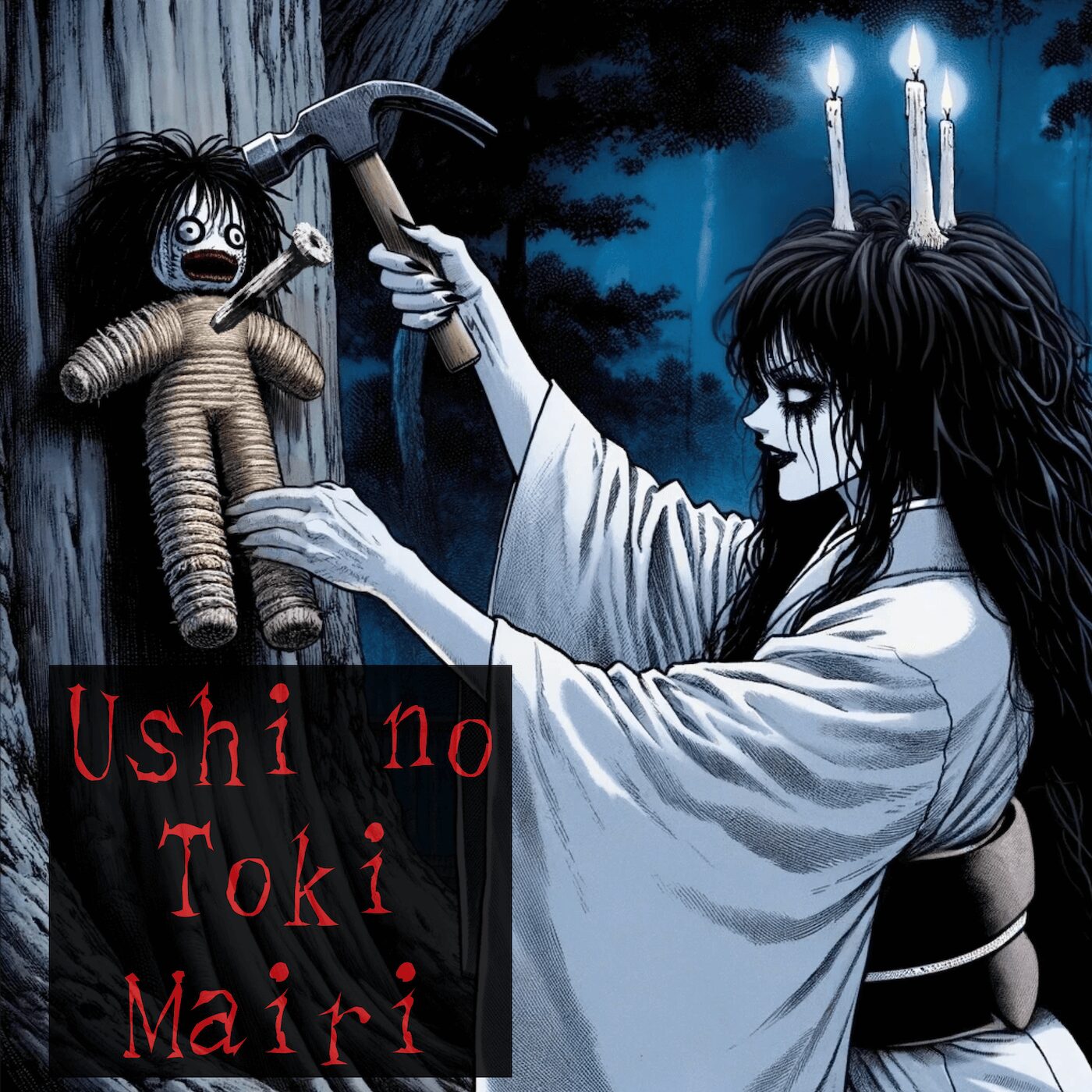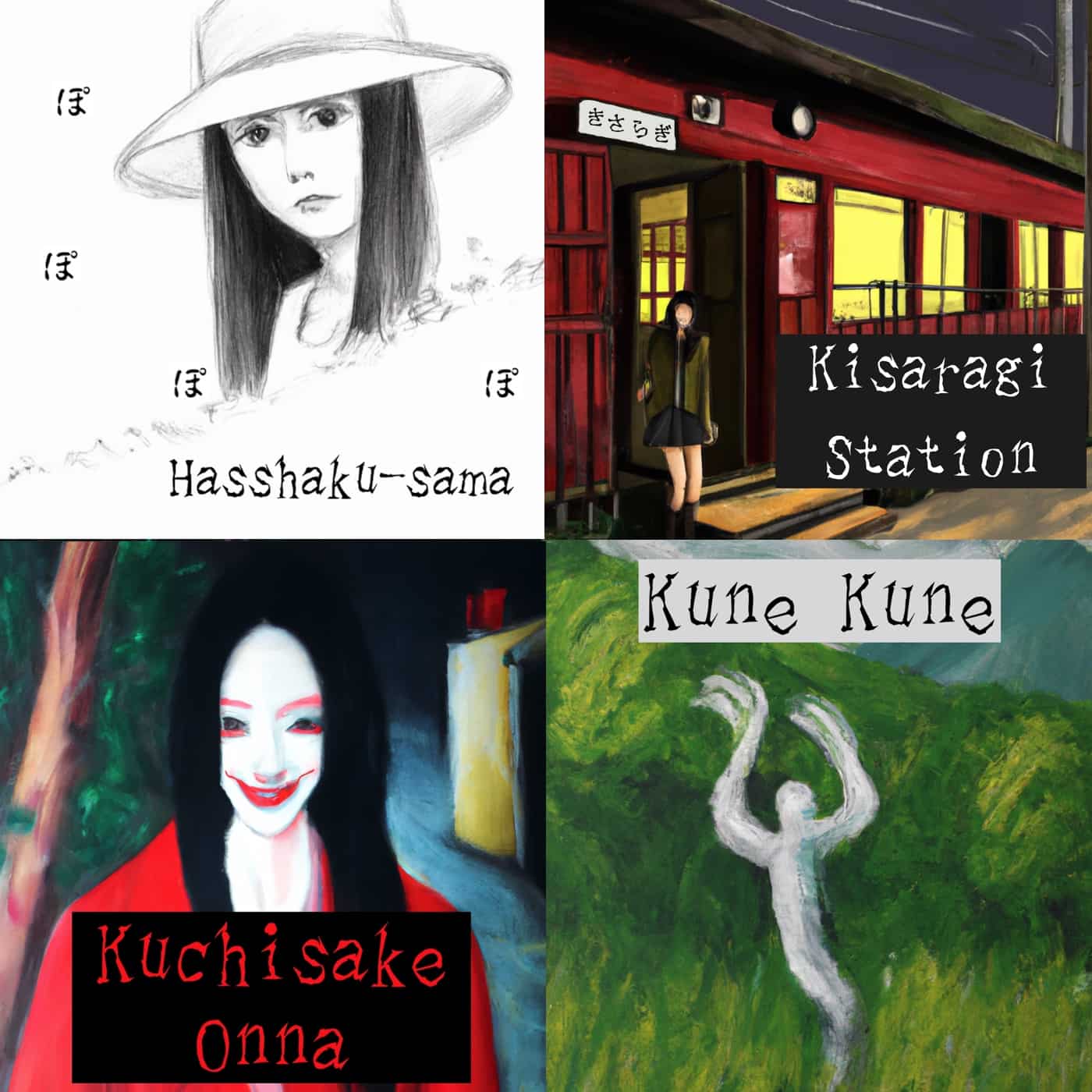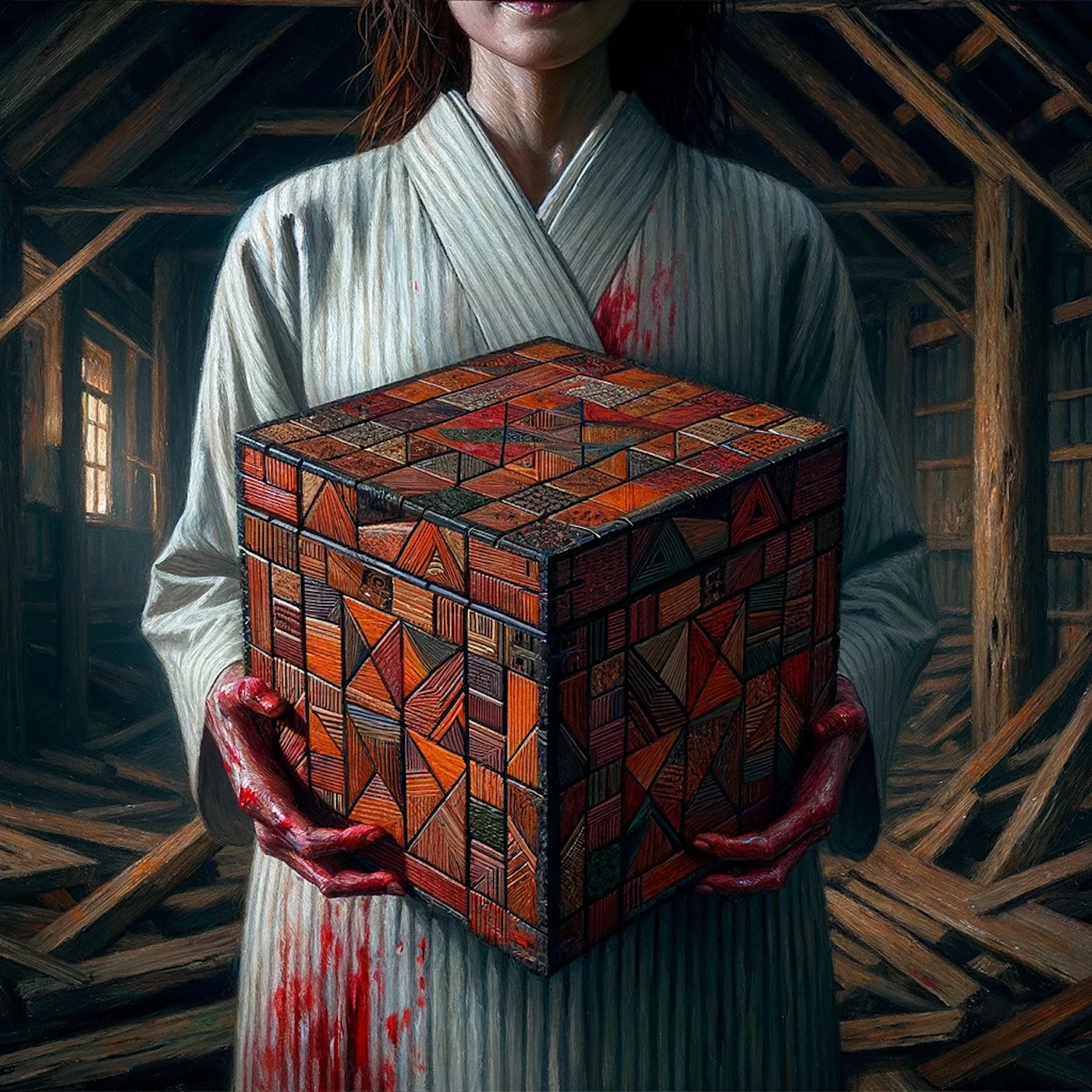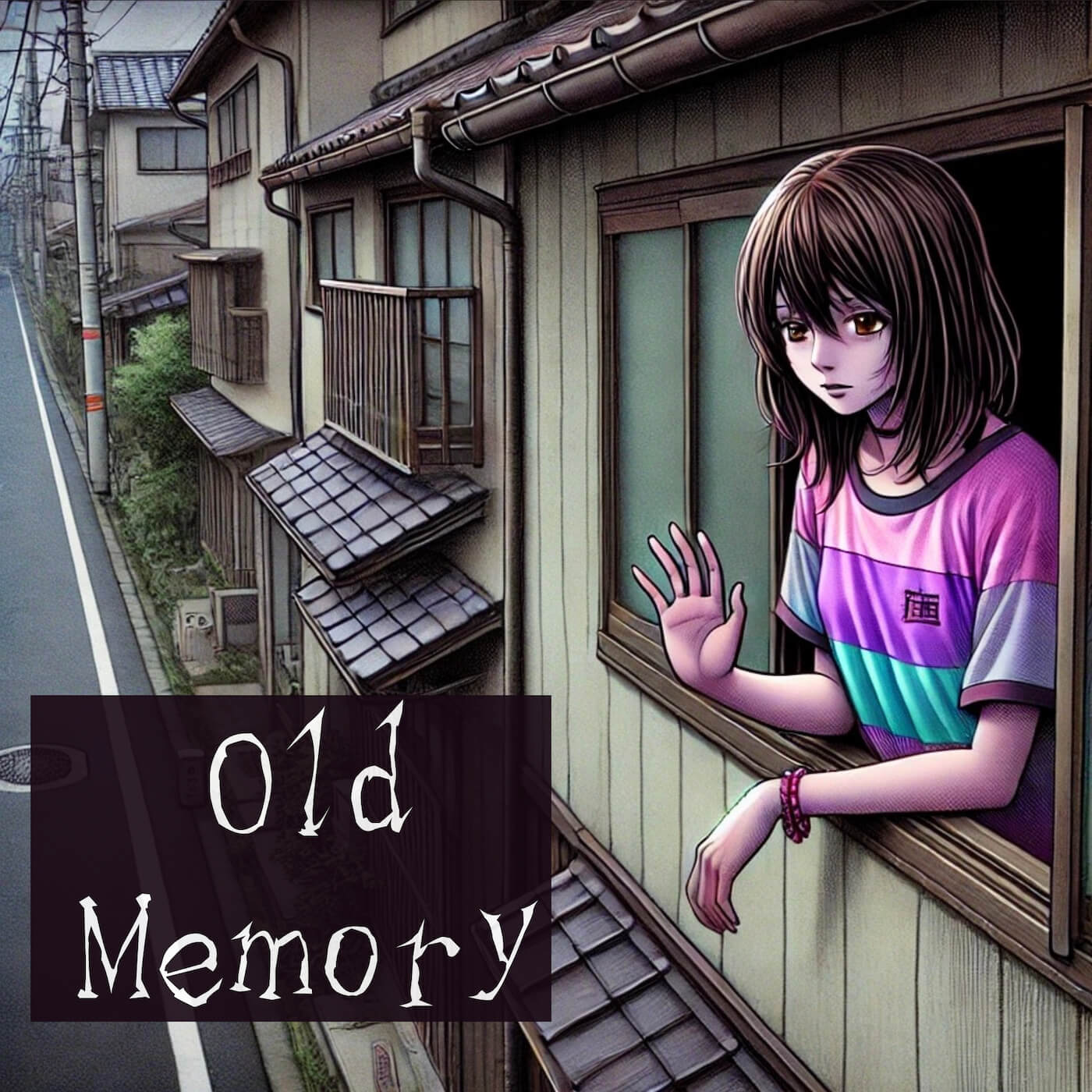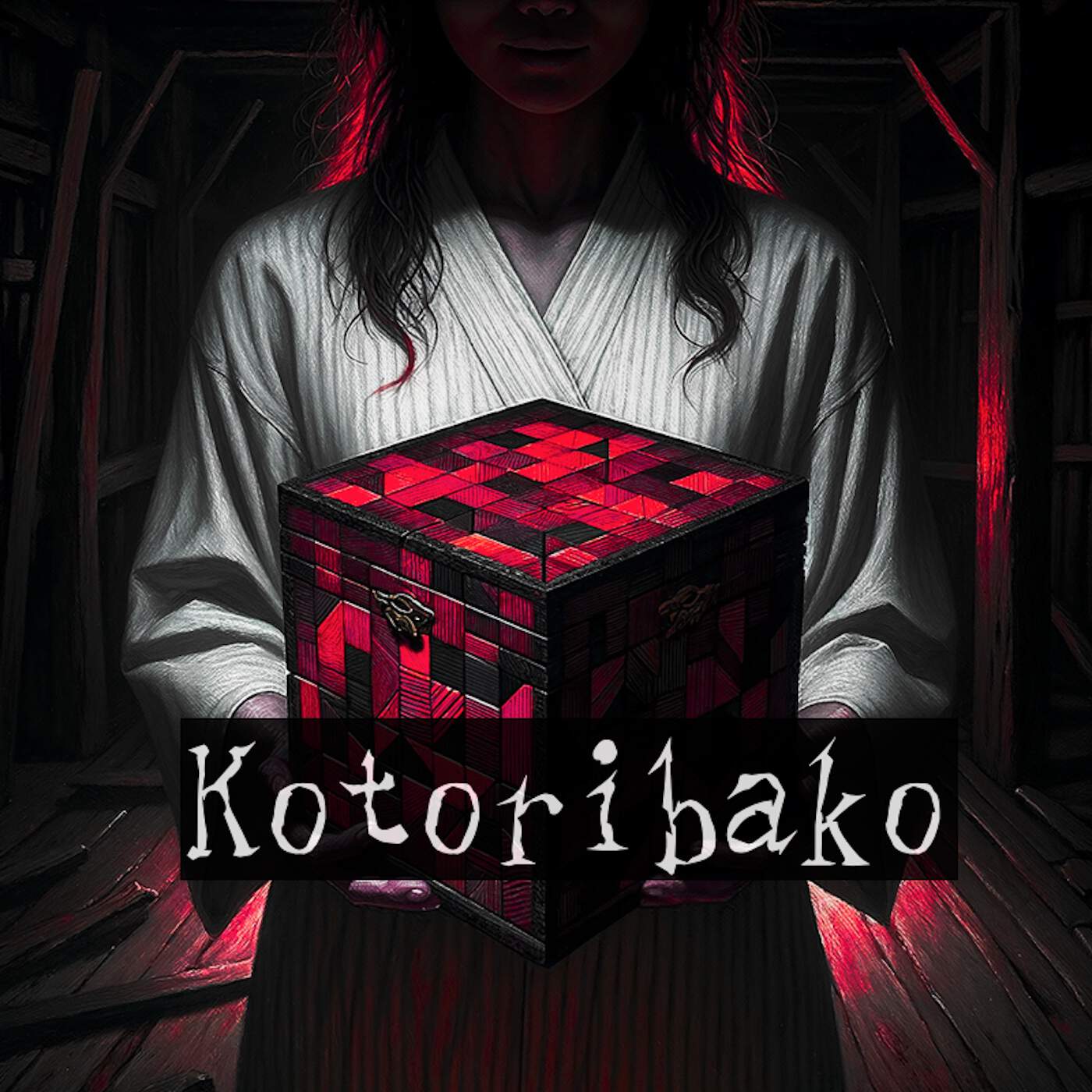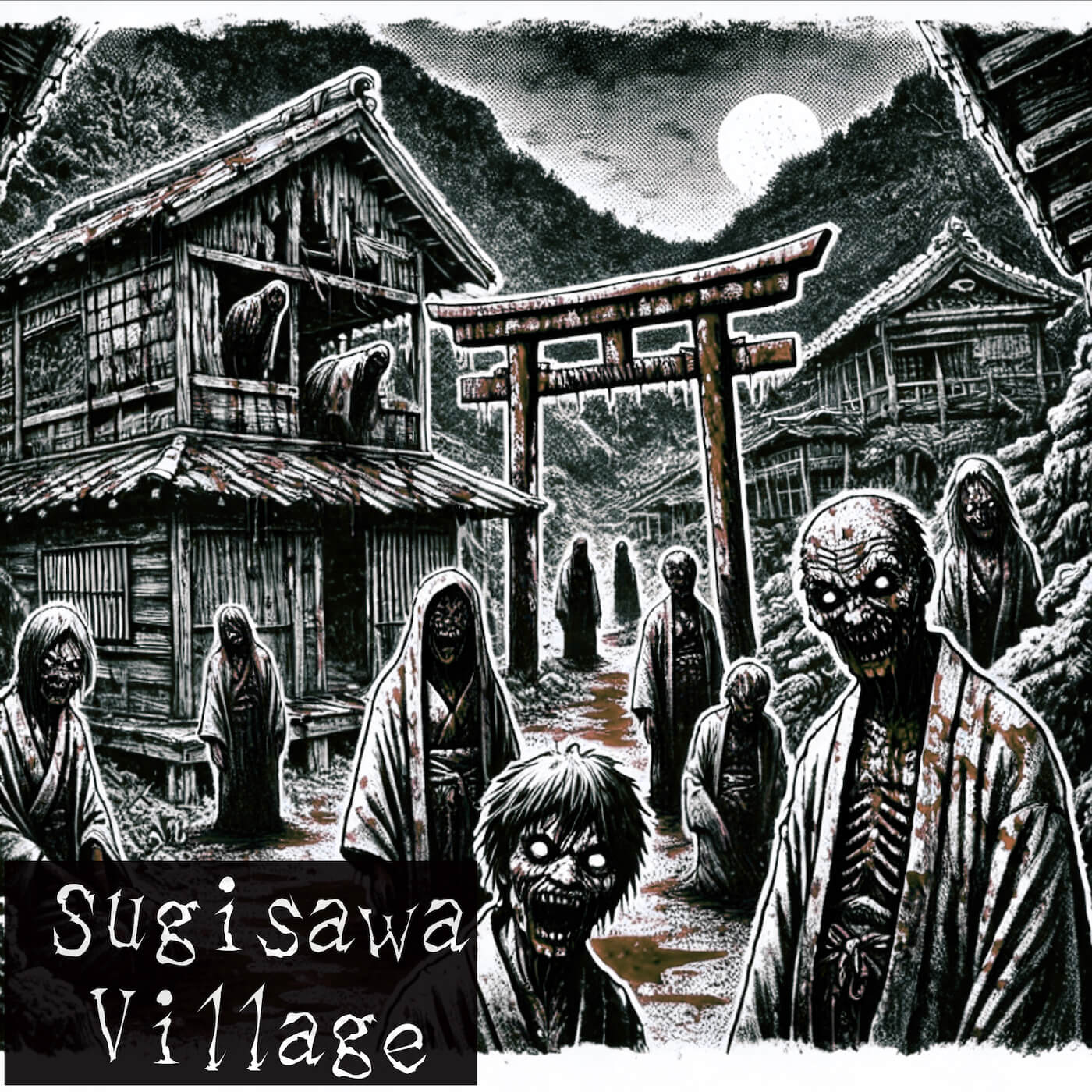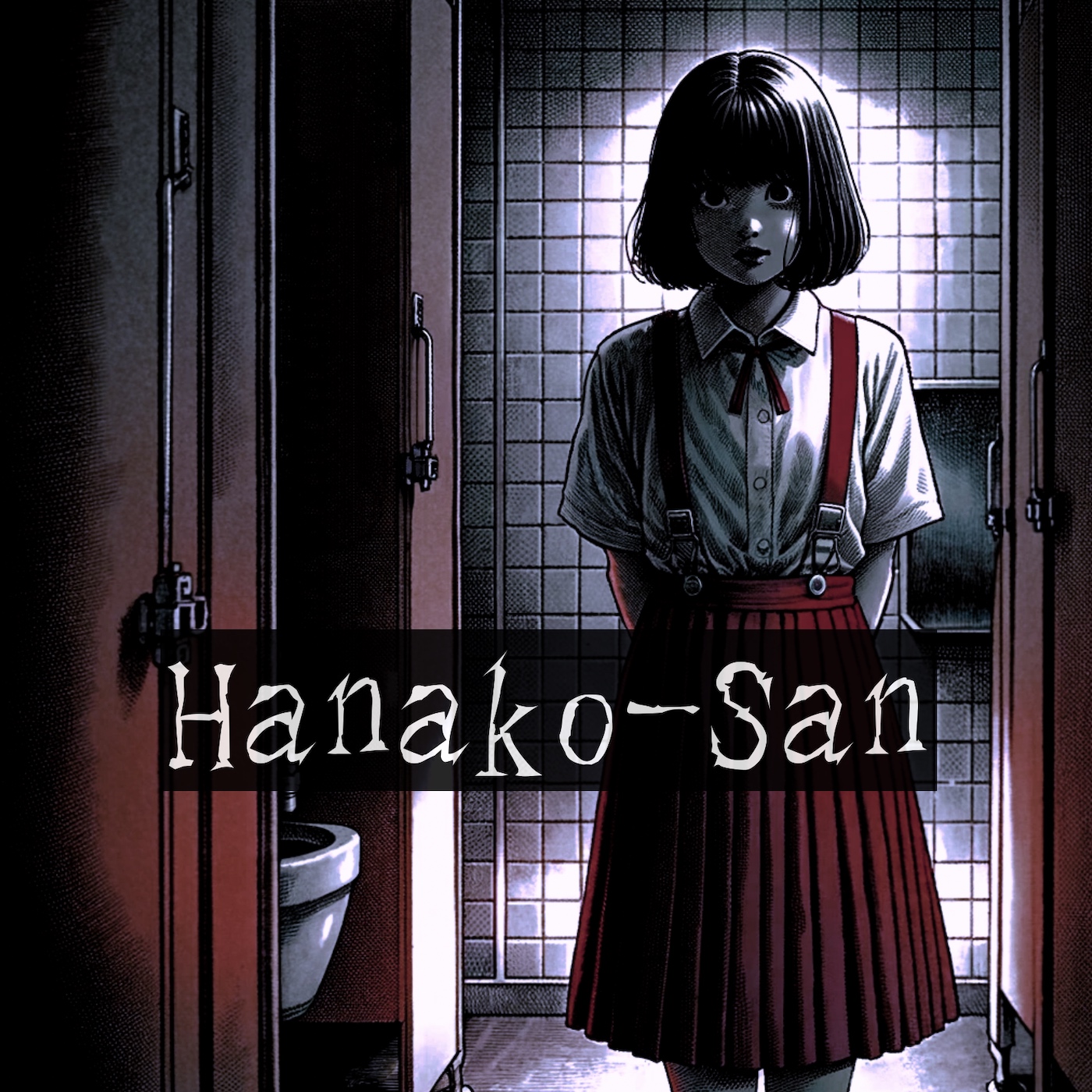Today, I will introduce Ushi no Toki Mairi (alternatively, Ushi no Koku Mairi), a Japanese ritual to perform a curse on someone.
If you see a suspicious woman dressed in white at a shrine late at night, never approach her. Once she realises you’ve seen her, she might come after you to kill…
What is Ushi no Toki Mairi In Japan?
Ushi no Toki Mairi (丑の時参り) is a Japanese cursing method. Another common name for it is Ushi no Koku Mairi (丑の刻参り).
It is not a particularly gender-specific expression, although in many cases, it is by women.
Ushi no Toki Mairi Story (podcast)
This story is from an ex-Shinto priest at a shrine who experienced a terrifying experience associated with Ushi no Toki Mairi…
↓Tap 「+」 to expand to read more, 「–」 to close each story chapter!
How To Perform Ushi no Toki Mairi
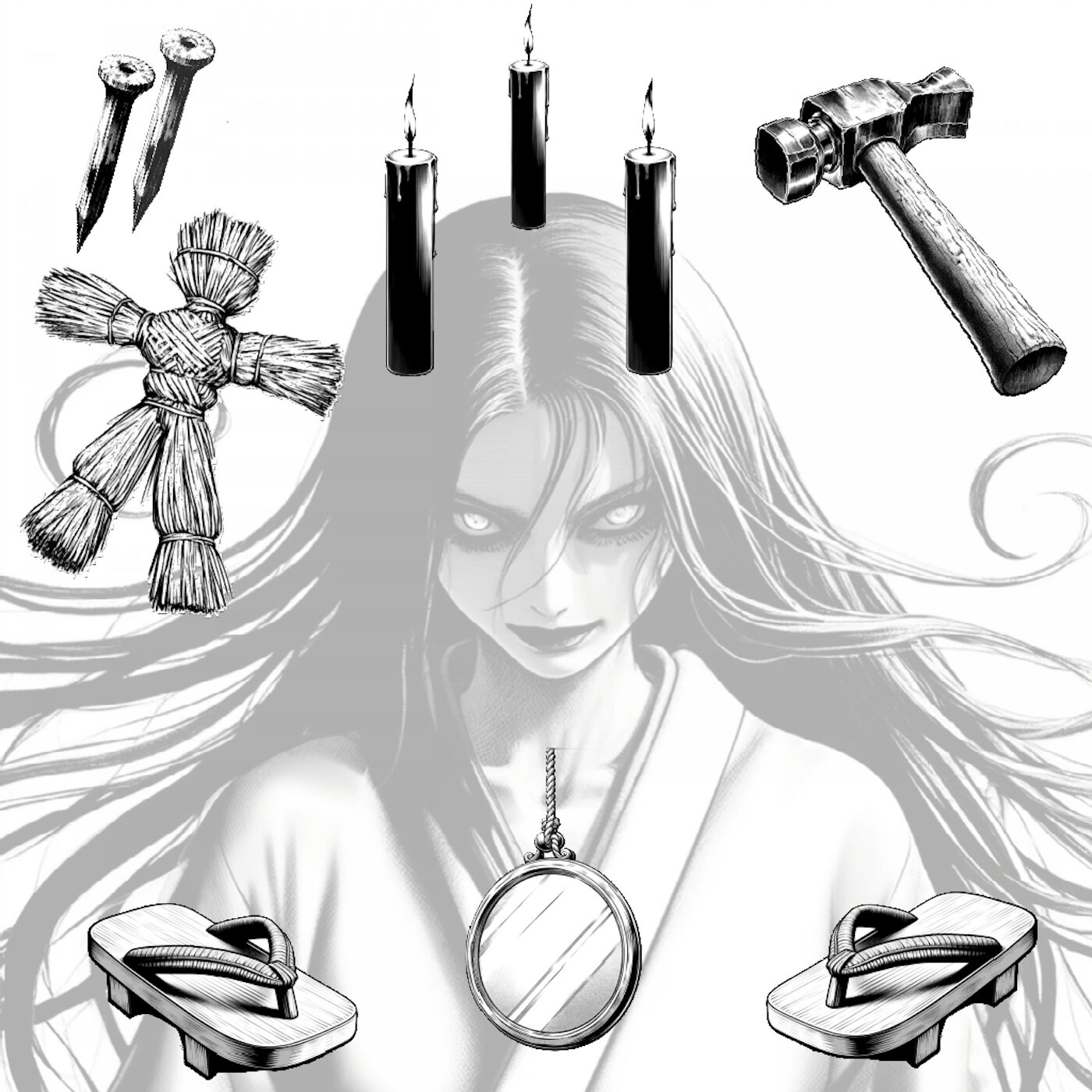
There are several steps to achieving Ushi no Toki Mairi, which can vary depending on a region or an era. I will share some of the basic ones here.
A woman consumed by hatred, dressed in white.
Imagine there is a woman who has developed a grudge and decides to curse someone.
She first dresses her whole body in a white kimono and paints her face white. The rest of her equipment is varied, but the following are the most common.
- A Wara Ningyo (a straw doll)
- Long nail
- Hammer
- On her head, a three-legged iron ring with three candles on the legs.
- On her feet, Geta (Traditional Japanese wooden flip-flop sandal).
- A mirror hangs from the neck.
Visit a shrine at the time of the ox (Ushi no Toki)
The Japanese counting system using 12 different animals is known as Junishi (十二支/the twelve animal signs of the Chinese zodiac), which can also be used to represent time.
The hours of the Ox, which is Ushi no Toki/Ushi no Koku(丑の時/丑の刻), are around 1 to 3 am. As such, Ushi no Toki Mairi is carried out in a Japanese shrine in this time slot.
Nail “Wara Ningyo (Straw doll)” to wood
She holds a Wara Ningyo (藁人形), which is weaved with straw into the shape of the person she hates. She nails it to a tree called Shinboku (神木) in the shrine, where the deity’s spirit is believed to dwell.
Some explanations include that putting a part of the cursed person’s body (e.g. a hair) inside Wara Ningyo increases the effect. Also, the part of the body affected by the curse is specified by the place where the nail is pointed on Wara Ningyo.
↓check out this related article to dive into Wara Ningyo
Repeat for seven days to fulfil the curse
Ushi no Toki Mairi must be performed night after night, and on the seventh day, the ritual is to be a success and the curse fulfilled.
It is commonly believed that when the curse is fulfilled, the person of the target will die…
What is the history behind Ushi no Toki Mairi?
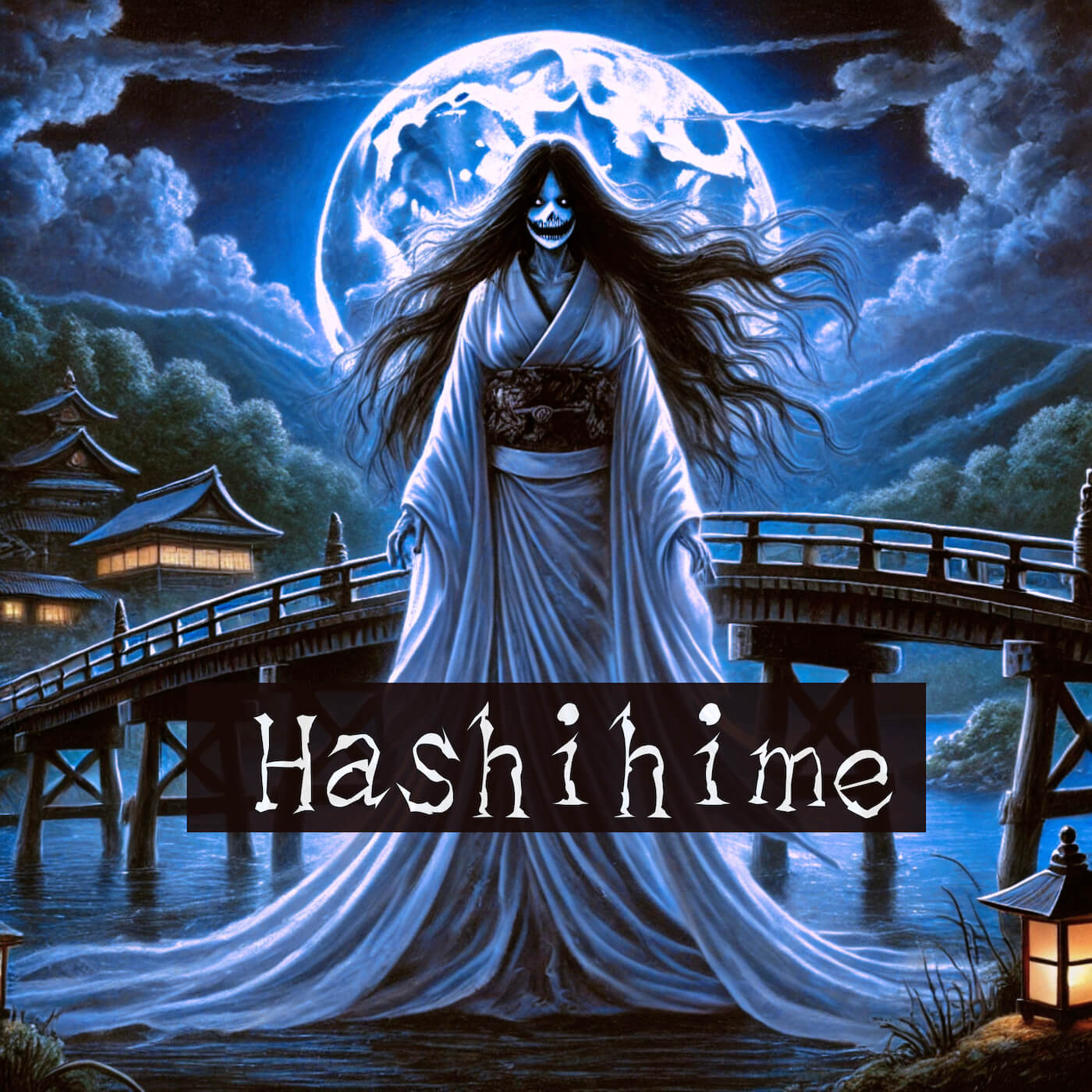
Originated from a shrine in Kyoto for general wish
There are many theories about the origins of Ushi no Toki Mairi, but the most famous one is related to Kifune Shrine (貴船神社). Kifune Shrine is located in the mountains of Kyoto and has had a long history since it was founded around the 6th century.
According to past lore, Kifune Myojin (貴船明神), the deity worshipped at Kifune Shrine, descended at the time of the Ox, on the Ox day, of the Ox month, in the Year of the Ox.
Therefore, although nowadays, Ushi no Toki Mairi is often performed in a cursing ritualistic sense, it was initially meant to bring good luck to fulfil a wish.
Legend of Uji no Hashihime in the Heian period
The prototype for the present-day Ushi no Toki Mairi is said to be the legend of “Uji no Hashihime (宇治の橋姫)”, recorded in the Heian period around the 9-10th century.
A girl, formerly the daughter of the rich, one day became intensely jealous of a woman and developed a hatred for her. She spent seven days in Kifune Shrine, praying, “I want to curse a certain woman to death. Please turn me into a demon”.
The deity of Kifune Myojin felt pity and then oracled her to change her form and immerse herself in the Uji River for twenty-one days.
Then, she dressed in white, with her hair tied up in five buns to look like horns, her face covered in vermilion, and her body in red with reddish tan. She also put a three-legged iron ring on her head upside down, set a torch in each leg, and held another two torches lit at both ends in her mouth.
Every night, she immersed herself in the Uji River for 21 days. After completing her asceticism, she finally fell into the demon state.
After that, she killed the woman she was after, then the lover of the woman, then all of the woman’s relatives. Finally, she went berserk and killed everyone in sight.
So, the theory is that these cursing rituals dared by the Uji no Hashihime became the original form of Ushi no Toki Mairi.
↓Check out this related article to deep dive into Hashihime legends!
Complete the present form in the Edo period
In the Edo period (1603-1868), Ushi no Toki Mairi became widely practised, mainly among women. The method dared at this time is close to the current method.
As an aside, it is also said that it was during the Edo period that the Noh play (traditional Japanese dance theatre) called Kanawa (鉄輪), which is based on the legend of Uji no Hashihime, became popular.
Therefore, I would like to share my personal view that this may have been one of the factors that led to the spread of Ushi no Toki Mairi in public.
What you need to be careful about Ushi no Toki Mairi

There are certain things to be aware of when performing Ushi no Toki Mairi, for both those who perform it and those who happen to witness it. Here are some of the most critical points to bear in mind.
Do not be seen by anyone
If you are the one who performs Ushi no Toki Mairi, you must not allow anyone to see you doing it.
If somebody sees you, not only will the curse not be fulfilled, but one theory suggests that the curse may rebound on you somehow.
In addition, Wara Ningyo (a straw doll) with the nail on it is also not supposed to be seen by people. So you should remove it and take it home after each night of Ushi no Toki Mairi.
Do not let them realise that you have seen it
If you are unlucky enough (or couldn’t resist your curiosity) to see Ushi no Toki Mairi, flee before the performers realise you have seen it.
As mentioned earlier, the performers will lose the curse’s effect if someone sees them, but they likely also know this information. As they might be mentally ill enough to want to curse someone to death originally, it is undeniable that some of them may think that they can kill the witness and pretend they are not seen.
Merely seeing Ushi no Toki Mairi does not usually put any curse on the witness, but you should be aware of the fear of people looming.
May cause legal charges
In many cases, visiting a shrine at night would not be a problem if it is open. Also, there is usually no charge for attempting to curse someone to death (an impossibility defence).
However, if you enter a closed shrine at night, you may be guilty of trespassing, and if you nail Wara Ningyo (a straw doll) to a tree, you may be guilty of destruction of property.
Has the curse ritual succeeded? Otherwise…
During your stay in Japan, you will see that shrines are in familiar places in the city and nature. Especially in the city, it is also relatively safe to go out at night, and you may even enjoy a late-night walk sometimes.
However, if you witness a woman dressed in white standing inside a shrine suspiciously… As for me, I can only hope that you will be safe.
↓Check out these related articles as well to find out more about Japanese urban legends/creepypastas!
Find Your Kaidan!
Discover your favourite Japanese scary/horror stories
Categories
Let’s talk
Would you like to analyse the story, make theories on it, and share your thoughts?
Please join our Discord channel
where you can share your thoughts and interact with other Kaidan lovers!
